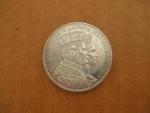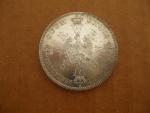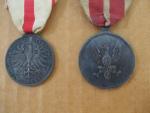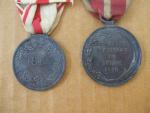
Beau Newman
Valued Member-
Posts
741 -
Joined
-
Last visited
-
Days Won
1
Content Type
Profiles
Forums
Blogs
Gallery
Events
Store
Everything posted by Beau Newman
-
There are certain grades of awards that were awarded to NCOs. For instance, Bavarian privates received the 3rd Class MVK while the higher grades went to the higher enlisted ranks. Officers would get, at least, the enameled 4th Class Order. Also, the presence of an enlisted long service award is another indication. On the Saxony/Reuss group above, there are both the Reuss merit medal, an enlisted award, and the Reuss House Order, 3rd Class, an officer's award. There is also a 15 Year Long Service Cross which was awarded only to enlisted men. This indicates several years of pre-war service. This guy probably started the war as an NCO but received a commission sometime later. A purely officer's bar will often have house orders. The only long service awards on an officer's bars will be those designated for officers such as the Prussian 25 year cross for line officers or the 20 year cross for reserve officers. In the case of an officer who had shorter service and had not been awarded a house order, there is no way to tell. Prussian officers often received only the Iron Cross which was available to all ranks.
-
A Turkish officer absolutely could be awarded a Prussian order. For example, Enver Pasha received the Pour le Merite in 1915 for his part in the Gallipoli campaign. As i understand it, the Red Eagle Order was the usual peacetime award to foreigners. Early on, there was a special version for non-Christians but, it was short lived and the standard version was awarded in most cases.
-
FWIW, my understanding is that the only wartime jeweler for these was Bernard Knauer. They used the mark "B. KNAUER" up to the early '20's, usually on the underside of the pin. The mark was changed to simply "KNAUER" sometime in the early '20's. Although marks can easily be reproduced, I understand that pieces marked only "KNAUER" without the "B" are, at best, 1920's or 1930's replacements.
-
Raising this old topic, I recently got this pair as part of a larger lot. I thought I would get your opinions. They are the Frankfurt Medal for 1814 (est. in 1846) and the Frankfurt Medal for 1815 (est. in 1816). Both are beautifully struck and are the correct weight. Any opinions would be appreciated as I haven't seen enough of these to develop a good feel yet.
-
Imperial Russia St. Stanislas - Swords or No Swords?
Beau Newman replied to Beau Newman's topic in Russia: Imperial
Wow! - That was a lot of work - much appreciated. I will keep my eye out for a 3rd Class Order w/o swords. Thanks again. -
A few years back, I picked up the mounted Pre-1905 Bavarian MVO Knight paired with a Stanislas ribbon. I would eventually like to complete the pair but, I have a question. I assume that this was probably a Bavarian military officer serving in some kind of diplomatic capacity in the 1880-1900 time frame. On the Stanislas, did swords indicate a wartime award or simply that the recipient was in the military? In the case of a foreign recipient, under what circumstances would swords be appropriate? Any feedback would be appreciated.
-
The book by Peter Ohm-Hieronymussen shows the numbers for Strelitz as 56 for the Gold Cross and 71 for the Silver Cross for all years between 1864 and 1918. Lugvigsen's book only gives the 1914 to 1918 numbers for Schwerin as 23 Gold and 21 Silver with no breakdown by grade for the 50 years prior. However, I think that it is safe to assume that the total for all years would be in the hundreds for Schwerin.





